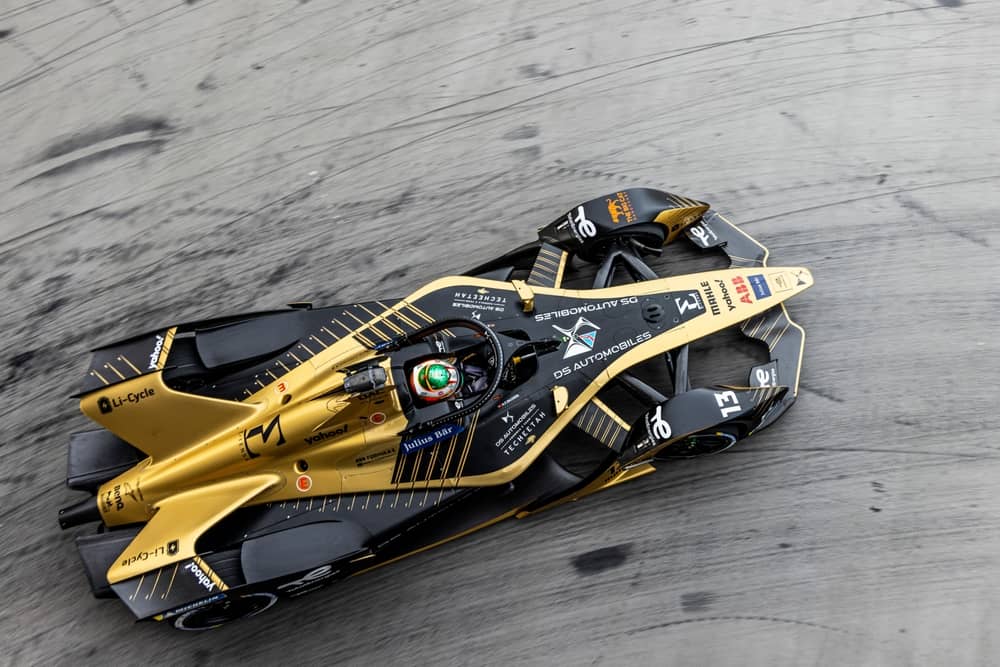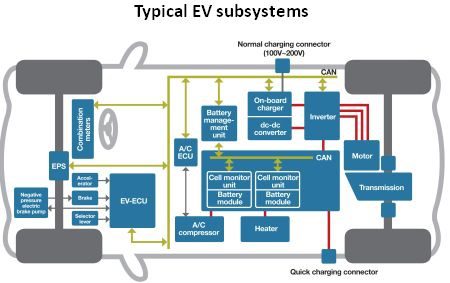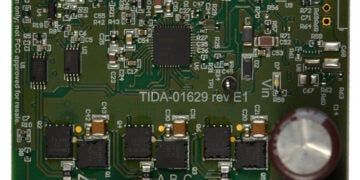
Formula E car designs are based on efficient power consumption models
The commitment to climate neutrality as put forth by the European Green Deal is clearly evidenced by the European Parliament and Council deal reached in late 2022. This agreement targets a 55% reduction in emissions by 2030 and an end to new sales of fossil fuel-based vehicles by 2035. Objections to this ambitious plan point to the political and economic challenges, both of which can most effectively be countered by the continuing evolution of electric vehicle (EV) technology.
Some people assume electric vehicles are less powerful than comparable fossil fuel-based automobiles. In fact, the fastest EV race cars in the world, Formula E, achieve 95% power efficiency, as opposed to 40% for combustion engines. However, capitalizing on this wide disparity in energy efficiency level depends on the power consumption model for electric vehicles based on your PCBA design.
Electric Vehicle Operation Overview
Creating an effective power consumption model electric vehicle begins with understanding the major elements of an electric vehicle system, which are listed below.
|
Electric Vehicle Elements
The EVB is the primary energy storage unit for the EV.
Most EVs have a backup or auxiliary battery or set of batteries that supply accessories or the vehicle in the absence of the EVB.
Connects the vehicle to its external power source for charging.
Converts external AC power to DC for use within the EV system.
The converter is essential for the EV power distribution network (PDN) as it ensures the correct voltage level is available for the various loads.
The inverter converts stored DC current into AC to drive the electric motor.
The electric motor powers the EV drivetrain, which enables forward and backward motion.
The transmission, which is gearless, transfers mechanical energy from the motor to the wheels.
The thermal system manages the operating temperature for many internal elements and is instrumental in EV efficiency.
Primarily, the controller regulates the speed of the EV by controlling the amount of torque generated by the motor.
|
All elements listed above use electrical power directly (or indirectly in the case of the transmission). Therefore, an accurate power consumption model must be utilized to design boards and electronics that maximize EV driving range and minimize operational costs.
Power Consumption Model: Electric Vehicles
Power consumption is an important consideration for all types of electric vehicles. And the elements of concern are the same, as demonstrated by the hybrid EV example below.

EV/HEV energy block diagram
To accurately estimate the power that an EV will consume requires that all subsystems and components that consume electrical energy be included in the calculation. Generally, this calculation can be represented by the loss equation shown below.
GENERAL POWER CONSUMPTION MODEL: ELECTRIC VEHICLESPLOSS = PBATT – PDRIVE + PREG + PAUX +PROAD (1) where PBATT includes all electrical energy from charging and stored in the battery pack PDRIVE includes motor losses, transmission losses, and all drivetrain power PREG includes motor losses, transmission losses, and all drivetrain power loss PAUX includes power used to operate lights, accessories, and other equipment. PROAD includes losses due to aerodynamic drag, road friction, etc. |
Mathematically, PBATT, PDRIVE, PREG, PAUX, and PROAD may each include multiple parameters, many of which are EV make and model specific. Typically, vehicle-specific information must be obtained from manufacturer datasheets or direct measurements. Several methods exist for solving this equation in closed form. These include dynamic programming, simulated annealing, Pontryagin’s Principle, neural networking, and optimal control theory algorithmic approaches like particle swarms.
Alternative methods for modeling EV power consumption do not require as many detailed specifics and are not as computationally intensive. Alternatives include online calculation tools or databases. As discussed above, these options suffice in many cases but may not be as accurate as using a comprehensive power consumption model for electric vehicles.
Designing EV PCBs for Power Optimization
Whether your project necessitates a detailed model or you opt for a faster alternative, optimization power utilization is an essential aspect of designing circuit boards for EVs. Following the guidelines listed below will help you to meet this requirement.
PCB Design for Optimal EV Power Consumption
- ✅ Prioritize power and thermal management in part selection and design
- ✅ Ensure your symbols, footprints, and 3D CAD models are accurate
- ✅ Utilize manufacturer datasheets for performance evaluations and part comparisons
- ✅ Know the environment in which your board will be installed
- ✅ Perform PDN and thermal simulations on your PCB
- ✅ Only source from reliable parts vendors
Incorporating the list of attributes above into your design process will help you to optimize the power consumption model for the electric vehicle system of your project.
If you’re looking for CAD models for common components or important design information like how to optimize the power consumption model for electric vehicles, Ultra Librarian helps by compiling all your sourcing and CAD information in one place.
Working with Ultra Librarian sets up your team for success to ensure streamlined and error-free design, production, and sourcing. Register today for free.








